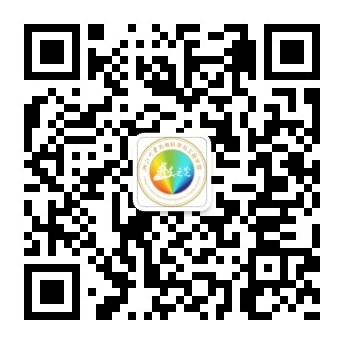由印度理工大学Rajesh Kumar助理教授担任主讲的《先进光子学-理论与应用》课程即将于2022-2023学年夏学期开课。该课程以线上全英文授课,上课时间为夏学期周一和周四晚上第11,12节,欢迎有兴趣的同学积极选课。
Course No:84190190
Title:Advanced Photonics – Theory and Applications
Class Hours/Week: 3-1 Credit: 2
Category:Specialty
Prerequisites:Basic Electromagnetic Theory, Basic Semiconductor Physics
Audience:Undergraduates
Teaching manner:
Teaching will be done in ONLINE mode using Microsoft Teams (https://www.microsoft.com/en-in/microsoft-teams/group-chat-software). If needed, any other alternatives such as ZOOM or WebEx may be used.
Assignments will be given for each chapter once significant portion of a particular unit is covered.
Course objectives and basic requirements:
The course ‘Advanced Photonics – Theory and Applications’ has been developed for the 4th year undergraduate students of ZJU. The genesis of the said course is based on (a) the experience acquired through the teaching of advanced level photonics courses such as Optical Electronics, Optical Communication Systems and Semiconductor Photonics taught by the instructor Prof. Rajesh Kumar to senior undergraduate and masters students in IIT Roorkee, and (b) the research expertise of Prof Kumar in the area of photonics.
Course introduction:
Photonics is a key enabling technology for the modern devices and systems ranging from hand held gadgets to data centers that might be situated at far away locations for the users. In order to appreciate the photonics at deeper level, advanced level of theory of photonics and its applications need to be covered in a right proportion. The main contents are listed as follows: interaction of radiation with the matter/atomic system; the basic principle of the optical resonator and its application on frequency comb lines; the theory of laser oscillations; III-V microcavity lasers, and III-V-on-Silicon microcavity lasers fabrication and their characteristics; the amplitude, phase or frequency manipulation of the optical beam and its applications.
Syllabus and lecture schedule:
Chapter 1 - Interaction of radiation with matter: 6 class hours
Polarizability and refractive index using classical electron model 2 class hours
Complex refractive index and dispersion:2 class hours
Lineshape function, Line broadening, Induced transitions 2 class hours
Chapter 2- Optical Resonators: 7 class hours
One dimensional resonator 0.5 class hour
Modes of a rectangular cavity1 class hour
Fabry-Perot Etalons2 class hours
Quality factor and losses in optical resonators 0.5 class hour
Ring resonators, State-of-the-art of Silicon ring resonators 1.5 class hour
Frequency combs, and their applications 1.5 class hours
Chapter 3- LASER Oscillations: 8 class hours
LASER as an optical oscillator 0.5 class hour
Fabry-Perot Lasers, Oscillation Frequency 1.5 class hour
Multimode laser oscillations and mode locking 1.5 class hour
Optical gain in a semiconductor 1 class hour
Homo-junction semiconductor lasers – limitations and remedies 2 class hours
Highlights of Nobel lectures of C.H. Townes and N.G. Basov 1.5 class hour
Chapter 4 - Microcavity Semiconductor lasers: 6 class hour
Rate equation analysis of microcavity lasers1 class hour
III-V microcavity lasers 1 class hour
Lasing action in silicon and germanium1 class hour
III-V-on-Silicon microcavity lasers 1 class hour
Advanced photonic functionalities with microdisk, microring and photonic crystal cavity lasers 2 class hour
Chapter 5 - Optical Modulators: 5 class hour
Concept of birefringence 0.5 class hour
Electric field in an anisotrpic medium 0.5 class hour
Electro-optic effect 0.5 class hour
Absence of Pockels effect in Si 0.5 class hour
Inducing Pockels effect in Si 0.5 class hour
Electro-refraction and Electro-absorption type modulators and their state-of-the-art
1.5 class hour
Newly emerged nonvolatile materials for optical modulation and switching 1class hour
Related teaching sections:
Online teaching of 32 lecture hours
Writing programs (in MATLAB or software/programming language of choice of students) related to photonic principles and device concepts
Writing the mini review/summary of recently published research papers
Test and Grading Criteria:
Evaluation will be done for total of 100 marks. Home work will be given by the instructor to the students as the teaching progresses. Home work will be designed to test (a) the conceptual knowledge (b) ability to derive certain important expressions and (c) skills for plotting the selected curves which are linked to concept building. Homework will earn a maximum of 20 marks.
Problem sheets will be given and solutions submitted by the student will earn maximum of 30 marks. Review of recently published selected research paper(s) by each student will earn maximum of 20 marks. At the end of the course, final written examination will be conducted and will account for 30 marks.
Suggested textbooks or references:
Photonics – Optical Electronics in Modern Communications, Amnon Yariv and Pochi Yeh, 6th edition, Oxford University Press , 2007.
Optical Electronics, Ajoy Ghatak and K. Thyagrajan, Cambridge University Press, 2009(reprint).
Elements of Electromagnetics, Matthew N.O. Sadiku, 6th edition, Oxford University Press , 2018.
In addition to above books, material based on original research papers, review papers and different PhD theses will be provided by the instructor to the students.







